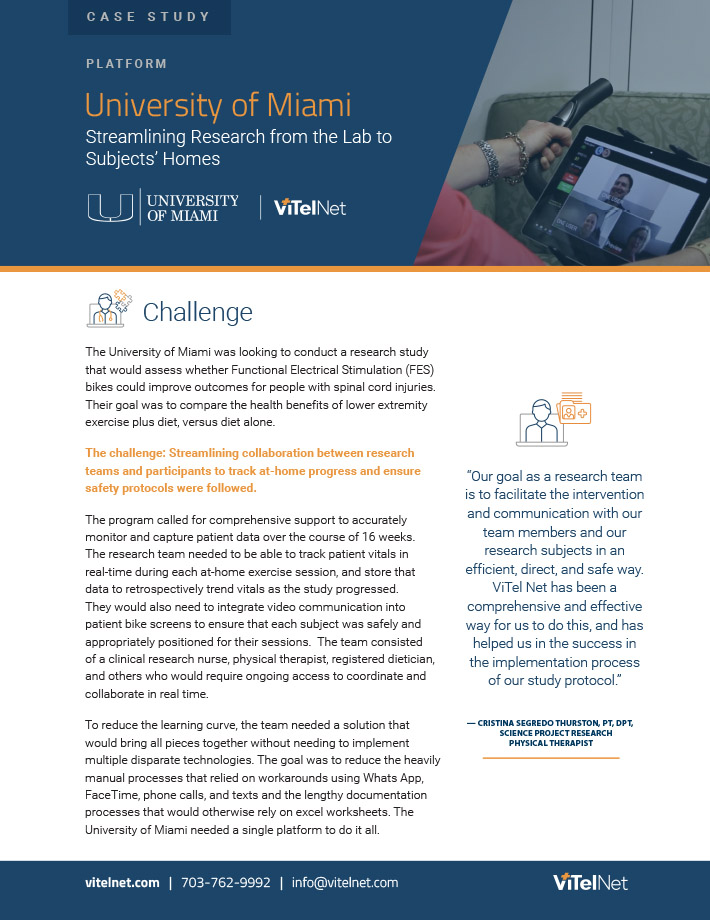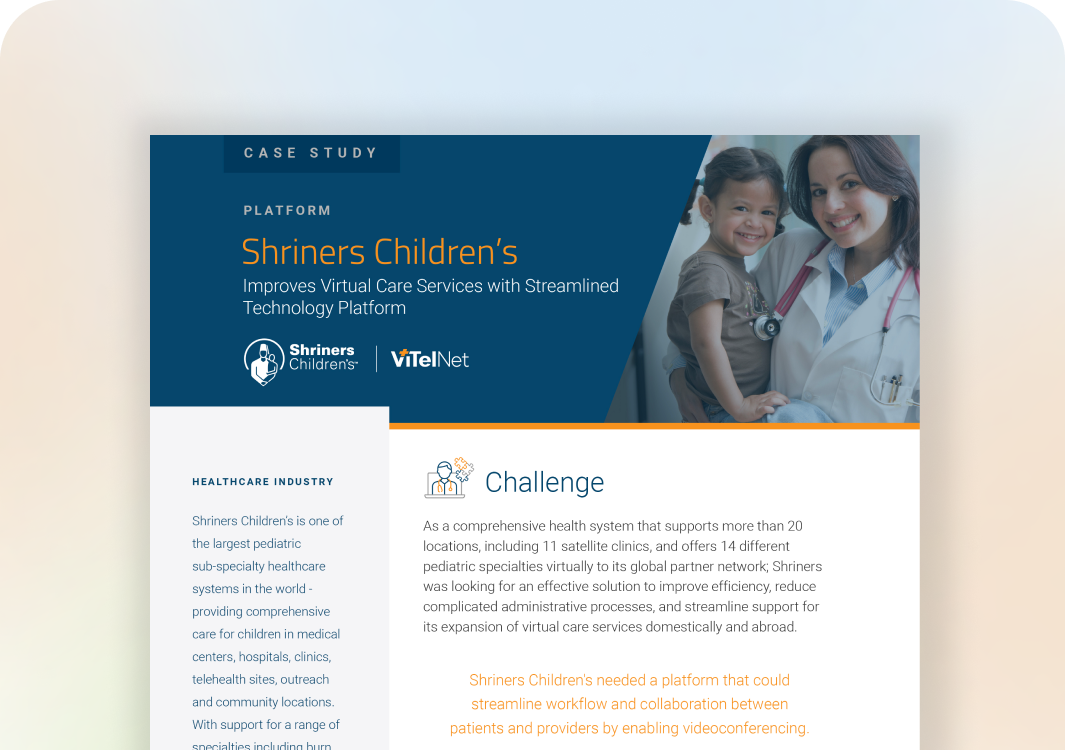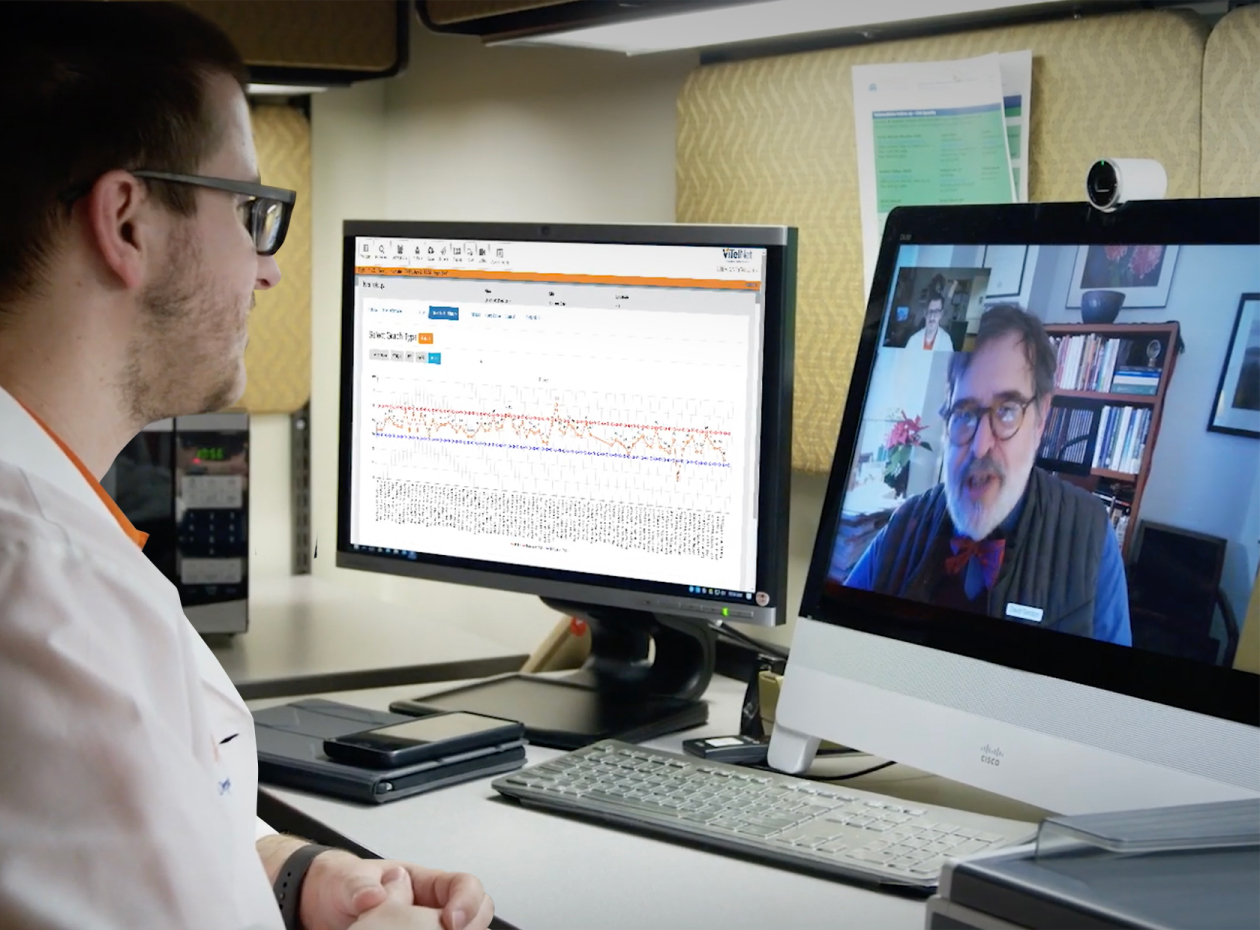Case Study
University of Miami
Health System
Streamlining Research from the Lab to
Subjects’ Homes
Share
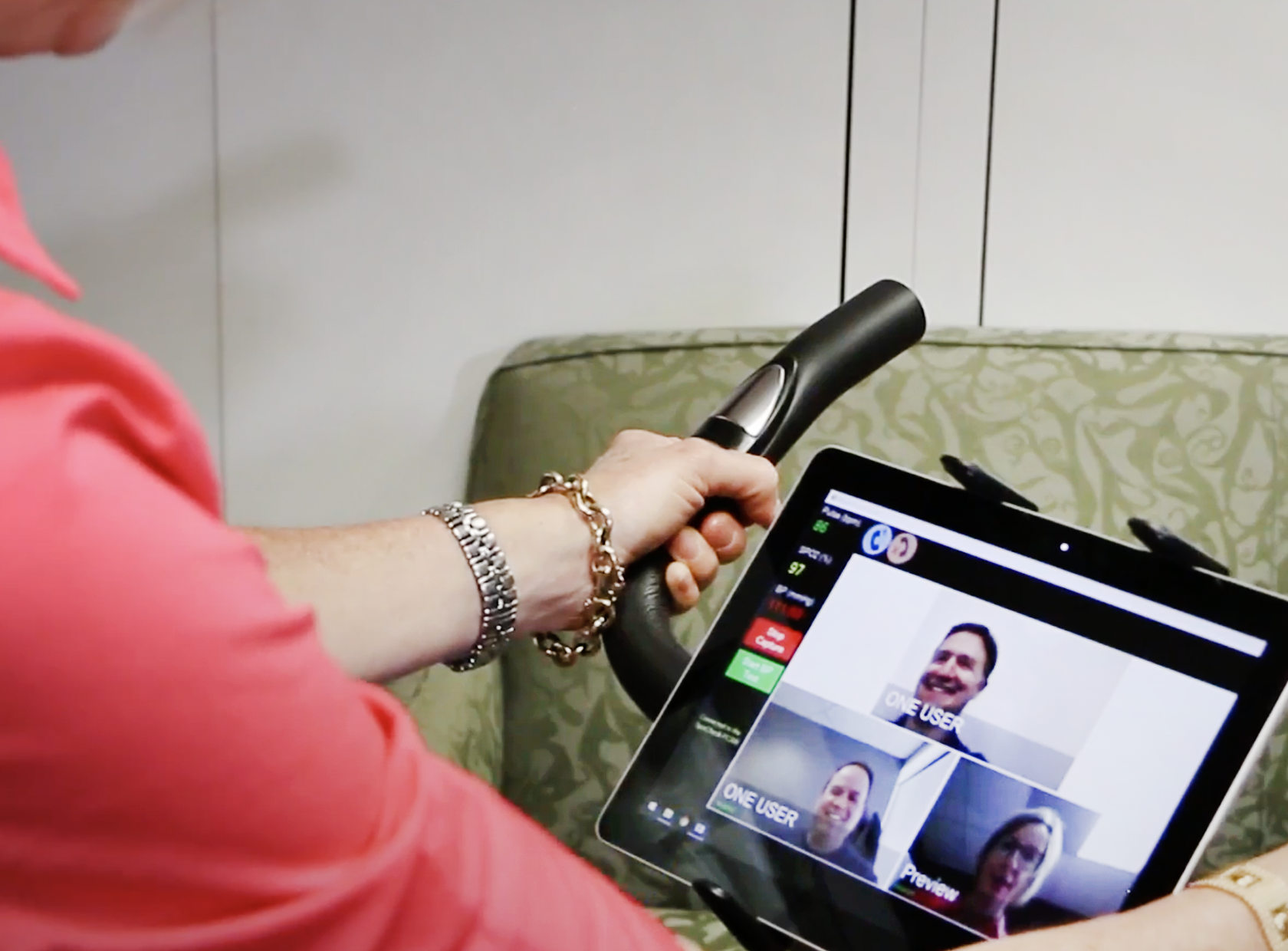
Challenge
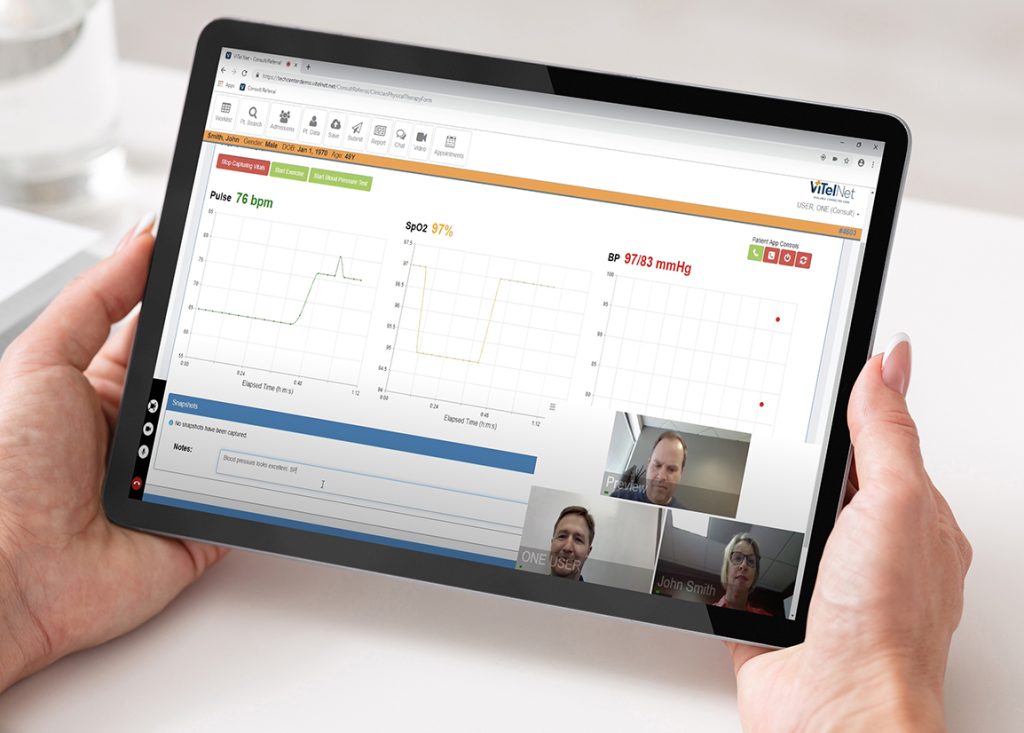
The University of Miami was looking to conduct a research study that would assess whether Functional Electrical Stimulation (FES) bikes could improve outcomes for people with spinal cord injuries. Their goal was to compare the health benefits of lower extremity exercise plus diet, versus diet alone.
The challenge: Streamlining collaboration between research teams and participants to track at-home progress and ensure safety protocols were followed.
The program called for comprehensive support to accurately monitor and capture patient data over the course of 16 weeks. The research team needed to be able to track patient vitals in real-time during each at-home exercise session, and store that data to retrospectively trend vitals as the study progressed. They would also need to integrate video communication into patient bike screens to ensure that each subject was safely and appropriately positioned for their sessions. The team consisted of a clinical research nurse, physical therapist, registered dietician, and others who would require ongoing access to coordinate and collaborate in real time. To reduce the learning curve, the team needed a solution that would bring all pieces together without needing to implement multiple disparate technologies. The goal was to reduce the heavily manual processes that relied on workarounds using Whats App, FaceTime, phone calls, and texts and the lengthy documentation processes that would otherwise rely on excel worksheets. The University of Miami needed a single platform to do it all.
“Our goal as a research team is to facilitate the intervention and communication with our team members and our research subjects in an efficient, direct, and safe way. ViTel Net has been a comprehensive and effective way for us to do this, and has helped us in the success in the implementation process of our study protocol.”
– Cristina Segredo Thurston, PT, DPT, Science Project Research Physical Therapist
Solutions
The University of Miami turned to ViTel Net to provide a solution using the highly configurable and interoperable vCareCommand platform. ViTel Net created a web-based application that made it easy for patients to launch their sessions, and easy for providers to collaborate throughout the study. Once the team was trained and cleared to begin, they quickly began recruitment and were using the ViTel Net platform integrated with the FES bike for effective sessions at a distance.
One major benefit of tracking the subjects’ vital signs while they exercised was ensuring that they were not experiencing signs or symptoms of Autonomic Dysreflexia. This is a common, dangerous, and life threatening condition that can take place when there are inappropriate elevations in blood pressure during exercise. Using an integrated bluetooth device, the platform allowed the team to monitor blood pressure and track heart rate in real-time throughout the session, making sure that each subject obtained and maintained their target heart rate per the research protocol.
The data was also stored to enable the research team to assess trends of the vitals for each session, and provide for a seamless hand off from team member to team member in between bike sessions.
As a result of implementing ViTel Net, VUMC was able to improve support for eight of its partner sites while streamlining clinical efficiency and delivering a consistent interface. The team was also able to successfully reduce time from first contact to provider response and automate patient record updates in both VUMC’s and the referring sites’ EHRs.
Additionally, as a learning health system, VUMC has enjoyed the flexibility to make quick changes to the environment as they discover new ways to enhance their patient and provider journeys.
Results
“The ViTel Net platform has been an integral component in the success of our program. The team at ViTel Net has been knowledgeable, approachable, available, thorough, and efficient at facilitating our use of the vCareCommand platform in our research study.”
– Eduard Tiozzo, PHD, MSCTI, FAHA, Residency Research Director, Department of Physical Medicine & Rehabilitation
The research subjects have been very compliant with ensuring proper placement of the vitals capture devices, and have enabled the system to consistently report their vital signs to the research team. They have, with the assistance of their caregivers, found the system practical to use and effective for keeping them safe, while allowing the team to collect the necessary data while they exercise.
The research team has been able to trend and retrospectively analyze their research subject’s vitals during the exercise portion of the research protocol in order to determine whether they have had any episodes of Autonomic Dysreflexia during exercise, and when and how long these episodes last if they have occurred. They have also been able to track whether, when, and how long their subjects have attained and maintained their heart rate in the proper target heart rate zone during exercise. The more the subjects stay in their target zone, the more likely they will experience significant physiological and health benefits.
Ultimately, the University of Miami will be able to determine the health benefits of exercise plus diet in a way that could never have been done as easily before..
